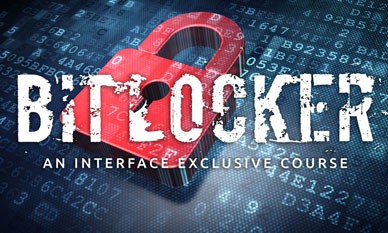
Understanding and Analyzing BitLocker
Analyzing BitLocker
- Context and background
- Understanding BitLocker
- Understanding BitLocker to Go
- Cryptography
- Trusted Platform Module (TPM)
Understanding BitLocker
- Pre-Boot Authentication
- System Tamper Detection\
- System Integrity Verification
- Network Unlock
- Encrypted Drive Support
BitLocker Architecture
- BitLocker Initialization
- BitLocker Operation
- BitLocker Suspend and Resume
- BitLocker to Go Architecture
Planning for BitLocker Deployment and Support
Planning BitLocker Deployment
- Prerequisites
- Examining Hardware Capabilities
- Planning Configuration Options
- Planning Recovery Options
IT Planning
- Planning User Interaction Scenarios
- Planning Recovery Key Access and Use
- Planning BitLocker Deployment Through System Center Configuration Manager (SCCM)
- Planning BitLocker Deployment Through Microsoft Deployment Toolkit (MDT)
- Planning BitLocker Deployment Through Microsoft Baseline Administration and Monitoring (MBAM) and Microsoft Desktop Optimization Pack (MDOP)
User Planning
- Identifying BitLocker Users and Devices
- Educating BitLocker Users
Deploying BitLocker
Single Standalone Device
- Configuring BitLocker Options
- Enabling BitLocker
- Encrypting the Drive
- Verifying BitLocker Operation
Single Domain-Joined Device
- Configuring BitLocker Options
- Enabling BitLocker
- Encrypting the Drive
- Verifying BitLocker Operation
Multiple Devices
- Deploying BitLocker Through Group Policy
- Deploying BitLocker Through PowerShell
- Deploying BitLocker Through SCCM, Altiris, and MBAM
Troubleshooting BitLocker Deployment and Operational Issues
Troubleshooting BitLocker
- Normal BitLocker Use
- Suspending and Resuming BitLocker
- BitLocker Recovery Mode
- Recovering BitLocker Devices
- Preventing BitLocker Recovery Mode
- Managing the Trusted Platform Module (TPM)
Anyone involved in planning, deploying, or supporting BitLocker. This includes CISOs, IT architects, system administrators, server administrators, disaffected college students, and technical support engineers.
A strong understanding of Windows deployment and management in an enterprise environment is required. Familiarity with cryptography and data storage technology is highly recommended.
After completing this course, student will understand how to:
- Plan for BitLocker deployment for both new and existing computers
- Create a recovery plan for lost encryption keys
- Identify computers that meet BitLocker hardware security requirements
- Determine optimal settings for encryption and data recovery
- Choose a strategy that minimizes BitLocker Recovery events
- Select and implement a BitLocker deployment method
- Implement an organization-wide or limited-scope BitLocker deployment
- Plan BitLocker integration with Microsoft System Center Configuration Manager (SCCM), Active Directory Domain Services, and Microsoft BitLocker Administration and Monitoring (MBAM)
- Support BitLocker systems in the field with minimal downtime


